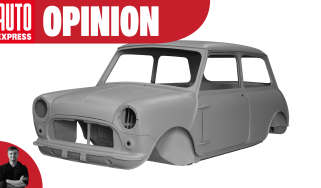Renault Z.E.
Electric-powered eco-mobile is not as crazy as it looks – and here's why...
The Z.E. proves just how close Renault is to a showroom-ready all-electric car. Based on the excellent Kangoo Be Bop, it’s full of neat ideas, environmentally friendly and highly practical, too. But it also shows that Renault is very advanced in finding the answer to the practical issues which have so far hindered the introduction of electric cars on to our roads. With a launch date that’s not that far away, the future is closer than you think.
Meet the greenest Renault ever. It’s called the Z.E. and it’s a zero-emission concept that showcases the French firm’s all-electric future.
When it debuted at October’s Paris Motor Show, it wowed visitors with its roof-mounted solar panels, green windows, Thermos flask-style bodywork – which is designed to keep the occupants warm or cool – and a scooter in the boot.
The eco-friendly Z.E. might look experimental, but it isn’t simply a pie-in-the-sky concept. It will become the new electric Kangoo Be Bop, which will appear in three years – just in time for the 2012 London Olympics. Renault is currently testing a range of electric cars, and plans to have a Mégane plus a plug-in Kangoo ready to unveil at the Games, too.
Used - available now

2020 Mercedes
C-Class Cabriolet
50,000 milesAutomaticPetrol1.5L
Cash £18,060
2020 Ford
Kuga
44,905 milesAutomaticPetrol2.5L
Cash £15,000
2022 Volkswagen
e-Up
12,684 milesAutomaticElectric
Cash £11,200
2023 Hyundai
Bayon
20,929 milesAutomaticPetrol1.0L
Cash £12,200So, as a taste of tomorrow, how does the Z.E. shape up? Well, it’s certainly clever. The bodywork uses heat-reflective paint and the panels have a thin layer of insulating material to reduce temperature changes. Even the acid-green perspex windows act like ski goggles to protect the occupants from ultra-violet rays, keeping direct heat out of the car.
This creates a sandwich of air to make driver and passengers comfortable. The small climate-control system is powered by solar panels fitted in the roof and the air is warmed only around where the occupants are sitting, so there’s no waste.
Those panels also boost on-board TV screens fitted to the dash, which replace the wing mirrors.
Foldaway
The sat-nav and music system is run from a mobile phone, which connects directly to the dash. The Z.E. has a Man Machine Interface (MMI) to pinpoint the nearest car parks and battery-charging stations.
Renault believes that within 10 years most city centres will be pedestrianised, which is why there’s a foldaway electric scooter in the boot.
The idea is that you park in a multi-storey then use the scooter to zoom to the shops. The Z.E.’s bodywork even uses polyurethane bumpers which can soak up minor knocks and are less damaging to pedestrians if there’s a collision.
The 70kw motor is powered by lithium-ion batteries, but on the move the Z.E. is no hot hatch. However, driving it is a real eye-opener. When it is freezing outside, the ingenious insulating cabin keeps you warm. The TV screen ‘mirrors’ are also far less demanding on the eyes, yet give much more vision.
But the most interesting thing is how Renault expects owners to keep the batteries topped up. One of the biggest challenges for electric vehicles is charging time – up to eight hours from a normal household socket.
Yet boss Patrick Pelata said that battery exchange is the best way forward. So, instead of filling up with fuel, you’ll go to a Renault charging station where you will simply park over a bay and the battery will be replaced in seconds.
You will also be able to purchase different battery range lengths depending on the journeys you will make. If the production version of the Z.E. is as good as this concept, we’ve got a lot to look forward to.
Rival: Nissan Cube Hybrid
It’s one of the most exciting small MPVs to go on sale in 2009. And the Cube will get even better in 2010, when an electric hybrid arrives, promising sub-100g/km CO2 emissions and 80mpg.



